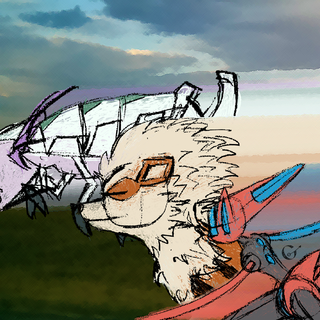 Speed is an important stat to have in a pokémon battle. Since the attacks are turn-based, speed is what determines the order of the attacks. The faster the pokémon, the earlier they get to attack. This can make a difference if the pokémon has low defense and one hit will knock it out. They need to attack first in order to knock out their opponent before they faint. Timing is an important factor in the financial world too. Buying a stock at the right time. Paying bills on-time. Making sure we deposit money into our accounts before that autopayment goes through. These are all based on the moment in time that we do them, just like pokémon attacks are based on speed. However, both pokémon battles and financial institutions have an invisible mechanic of priority that allows some attacks and payments to go earlier than others, before ever considering their speed. These are called priority moves and transaction processing order, or what I call priority transactions. Before diving too deep, today’s post will be one of the most technical posts I have written to date.* Hopefully, I will make it as interesting as I find it. Please, try not to yawn and fall asleep. What are priority moves?
In Pokémon’s core video games, battles are turn-based, which means that the pokémon take turns attacking each other, instead of everyone attacking at the same time. It may appear that the fastest pokémon always attacks first, however, the game uses an unseen mechanic that refers to priority stages associated with specific moves before ever looking at each pokémon’s speed. These unique moves are called priority moves. There are thirteen possible stages of speed priority, starting at stage +5 down to stage -7. Most pokémon attacks are at stage 0, the most basic of the speed priority levels. Once the game has an order based on the attacks' priority stages, then it refers to the pokémon’s speed stat for those at the same priority stage. For example, if an arcanine uses extremespeed, which is at stage+2, and the other pokémon use a move priority at stage +1 or lower, arcanine will have the first move. However, if an arcanine uses extremespeed and a golisopod uses first impression, also stage +2, arcanine may end up going second if the golisopod’s speed is higher. When my kommo-o uses dragon tail, it’s stage -6, chances are high that she is going last this turn. What are priority transactions? While we can watch a pokémon battle in real time, most financial institutions do not process our transactions in real time. Just because we deposit a check in our bank at 10 am doesn't mean it is immediately available for us to spend at 11 am. Just because we bought something with our debit card doesn't mean that money is no longer physically in our account. Most of our transactions get processed overnight by real people or computers. Like in the games, our financial institution's employees, most likely computers, also need a system to determine a processing order for our daily transactions. This priority list can be referred to as the transaction processing order, the transaction priority policy, or priority transactions (as I like to call them). Unlike the pokémon games, financial institutions have no standard for prioritizing transactions. One may have 10 stages of priority and then refer to transaction dates and times. Another may have only one stage and their order is based on largest amounts to lowest amounts. Because of all the possible variations of priority transactions, it is important to speak to our banks to gain a clear idea of what their policy is. Sometimes it can be as simples as reading your terms and conditions. I first attempted to find Wells Fargo’s priority transaction list on their website, but it was like finding a kecleon on a bridge. I needed help. So, I called them and spoke with Clerk Vanessa. I told her I was looking for their “transaction priority policy.” At first, she hesitated, but I informed her I was not asking about any specific transactions, that I remembered getting an e-mail about a change in the policy a couple years ago and I wanted to get some clarity. It was obvious to me that she had never been asked this before. She first needed to ask her supervisor what information she could give me over the phone. Once she returned, she answered all my questions. Their transaction priority stages are: 1. Deposits- cash or checks I have deposited into the account 2. Credits- electronic deposits into my account; like direct deposit and electronic transfers 3. Debits- money going out; ACH payments, checks, scheduled payments, etc. Once ordered by priority stage, the speed of each transaction is based on two different stats, the time of authorization and the authorized amount. The time of authorization involves both the date and timestamp the card was authorized, the check entered the system or the autopayment was scheduled to start. Clerk Vanessa was very clear that it IS NOT the time that the PAYMENT CLEARS. An authorized payment may take a day or two to clear and will normally appear on their website as "pending". (This follows a different procedure entirely.) That payment will be processed the night it clears, but will use the time of authorization to determine its spot in the lineup. If two transactions have the same time of authorization, they are then organized by the authorized amount from lowest to highest. For me, this typically happens with automatic payments and scheduled payments because they are typically scheduled by date, not by time. I like to believe they are timestamped 12:01 am. Clerk Vanessa also made it clear that the current policy is expecting an update in the next couple of months and I should keep a keen eye out for a notification detailing the changes. For example, back in December, my husband ran into a foongus of a situation. Our line of credit is set up on autopay, which means that the day that each month’s bill is due, it will automatically schedule a payment for whatever still needs to be paid. My husband usually pays it before the due date which cancels the autopayment because there is no longer an amount due. Last month, he scheduled his payment the day it was due, without realizing that the autopayment had already scheduled itself. The following morning, he was calling the bank because they withdrew both the autopayment amount and his payment amount, which left his checking account looking false swiped. Every little piece of information that can help us understand the rules of the game we are playing gives us the ability to use the rules to our advantage. Understanding priority moves helps a trainer moomoo milk all they can out of their pokémon’s prankster ability. Understanding transaction priority can help us prevent overdraft fees and other unexpected surprises. Let’s chat: What was a time that priority transactions helped your accounts? What was a time that they hurt your accounts? Further reading: Wells Fargo Improving Transaction Posting Order- Consumerism Commentary Banks Rearrange Transactions in Order to Charge More Overdraft Fees- Eye Opener Banks and Pokémon Centers- The Grown-Up Pkmn Trainer *Please keep in mind that I am not a professional or an expert and you should speak to your financial institution or a professional for more information.
0 Comments
Leave a Reply. |
Bag Pockets
All
Blog
|
© 2016-2018 Tojo Designs/The Grown-Up Pkmn Trainer
Most images created for this blog are derivative works based on the copyrighted property trademarks, of The Pokemon Company Internationl, Inc. © 2018 Pokémon. © 1995-2018 Nintendo/Creatures Inc./GAME FREAK inc. Pokémon, Pokémon character names are trademarks of Nintendo.
Most images created for this blog are derivative works based on the copyrighted property trademarks, of The Pokemon Company Internationl, Inc. © 2018 Pokémon. © 1995-2018 Nintendo/Creatures Inc./GAME FREAK inc. Pokémon, Pokémon character names are trademarks of Nintendo.

 RSS Feed
RSS Feed